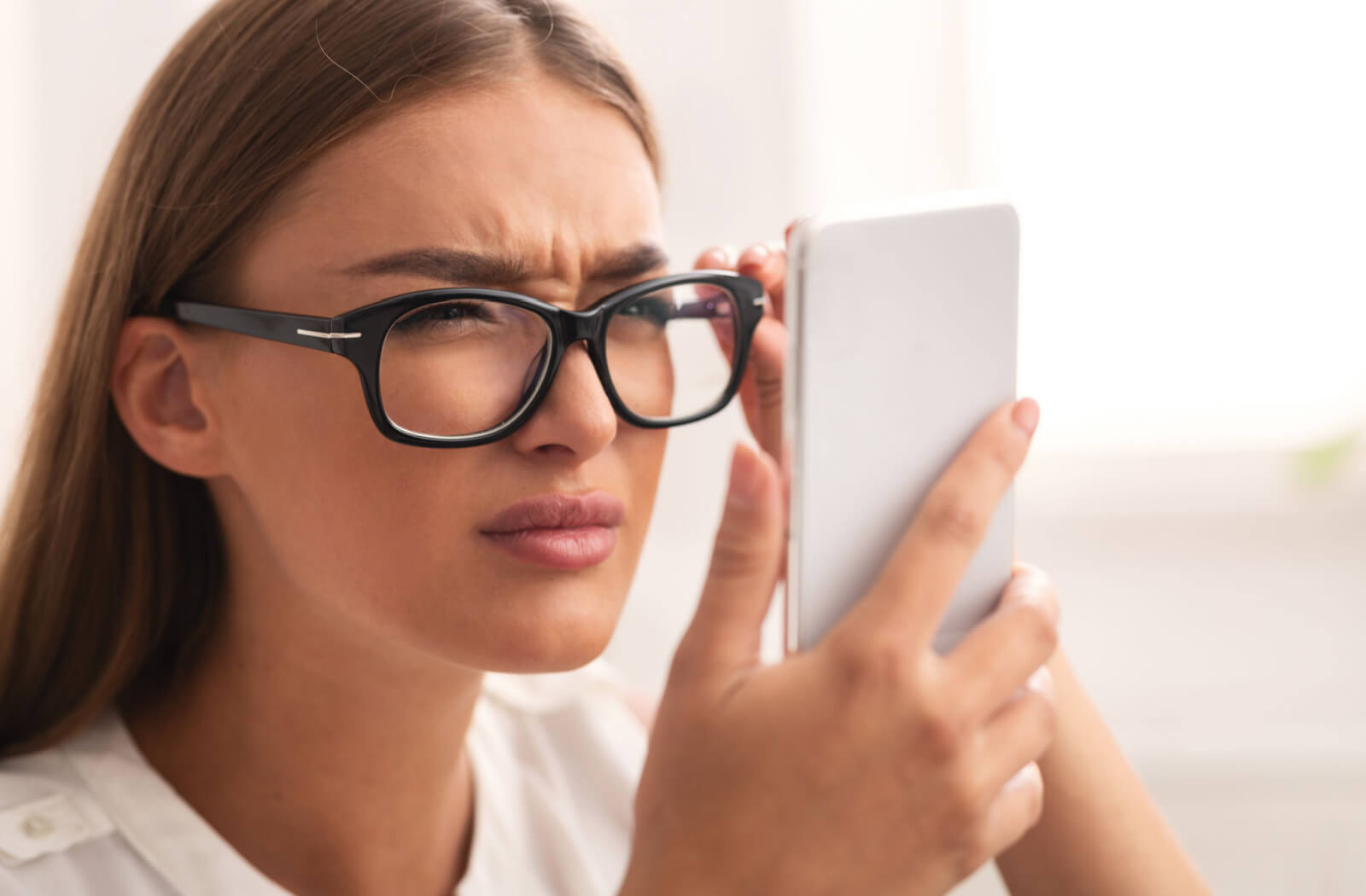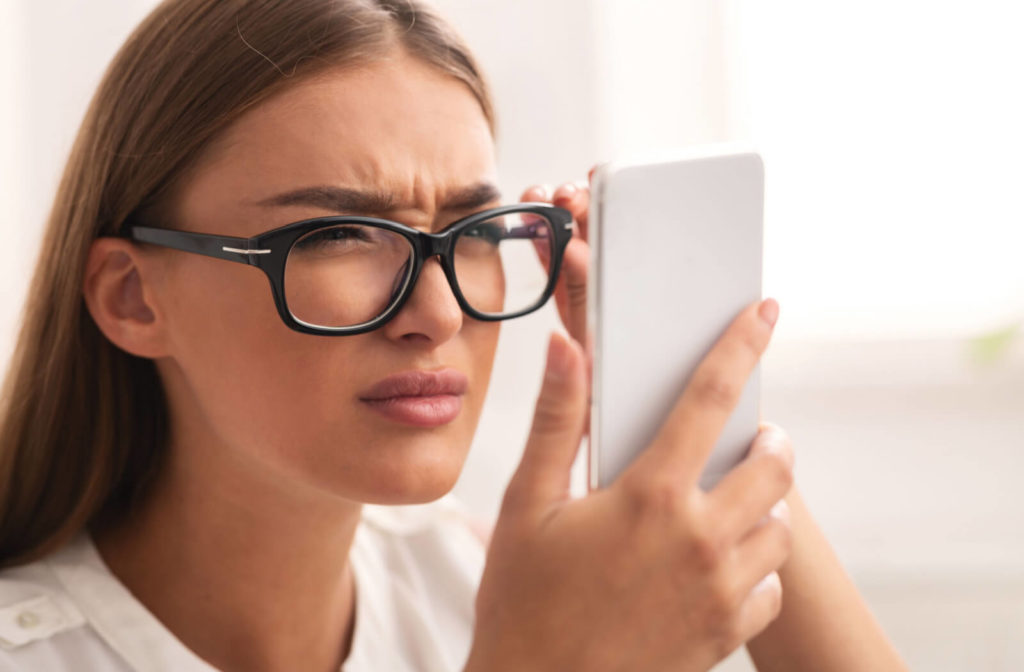If you notice blurry vision when doing near work, such as reading or working on the computer, or if you find it hard to see far away road signs when driving, you may have either myopia or hyperopia.
Myopia and hyperopia are 2 very different types of vision conditions. Both are refractive errors caused by the shape of the eye affecting how light is focused on the retina, but myopia affects your distance vision while hyperopia affects your near vision.
Let’s look at both myopia and hyperopia to see the differences and how each can be treated so your vision is at its best.
What Is Myopia?
Myopia, also known as nearsightedness, is a refractive error that causes distant objects to appear blurry while nearby objects remain clear.
For you to see clearly, light has to land on your retina—the light-sensitive tissue responsible for receiving and organizing visual information. But an eye with myopia is longer than normal or has a cornea that’s too steep, causing light to land in front of the retina instead of directly on it.
Myopia runs in families, so if a parent has it, their children are at risk of developing it as well. It often shows up in children 6 to 14 years old, and it may worsen during adolescence.
Myopia affects roughly 33% of Canadian children, and its prevalence is growing worldwide. By 2050, more than half of the world’s population will have myopia.
If not addressed, even a relatively mild case of myopia in childhood can progress to a severe case by the time your child reaches adulthood. And high myopia increases your child’s chance of developing a sight-threatening eye condition.
Myopia control therapy slows eye growth using special glasses, contact lenses, or atropine eye drops.

What Is Hyperopia?
This refractive error has the opposite effect of myopia. Hyperopia is also known as farsightedness and causes blurry close vision but clear distance vision.
Hyperopia occurs when the eye is shorter than normal, resulting in light focusing behind the retina rather than directly on it.
Although 2 parents who aren’t farsighted can have a farsighted child, severe farsightedness is usually inherited.
Some children with hyperopia may develop crossed eyes, which can lead to visual impairment if not treated. It’s important to take your children to their optometrist for regular eye exams so childhood eye conditions are caught and managed early.
Symptoms of Myopia & Hyperopia
Some symptoms of nearsightedness and farsightedness are similar, such as:
- Headaches
- Eye strain
- Squinting to see clearly
- Eye fatigue
What’s the Difference Between Myopia & Hyperopia?
In a nutshell, hyperopia is the polar opposite of myopia. Myopia causes distant objects to appear blurry while leaving near vision unaffected. Nearby objects are usually blurry when you have hyperopia.
How Are Myopia & Hyperopia Diagnosed?
A comprehensive eye exam, which includes a refraction assessment and an eye health exam, can detect both myopia and hyperopia.
A refraction test determines whether you have nearsightedness or farsightedness, as well as astigmatism or presbyopia. To test your distance and near vision, your doctor may use various instruments and ask you to look through various lenses.
For the eye health exam, your eye doctor will most likely place drops in your eyes to dilate your pupils to allow them to see better inside your eyes. This dilation may cause your eyes to be more sensitive to light for a few hours after the exam.
Treatment for Myopia & Hyperopia
Neither condition is curable. However, they’re both easily corrected with glasses or contact lenses. Those over 18 with stable vision, they can undergo refractive eye surgery as well.
Because of the eye health risks associated with myopia, this refractive error is ideally managed and slowed while the eyes are growing to preserve your child’s eyesight as they get older. This is done through myopia control.
Lenses
Prescription lenses are widely used and an effective tool for correcting refractive eye errors such as myopia and hyperopia. They work by altering the way light is refracted by the eye, ensuring that it reaches the retina properly and that the image received by our brain is clear.
Prescriptions can change, so it’s important to see your eye doctor on a regular basis so they can monitor vision changes and check the health of your eyes.
This is significant because refractive eye errors such as myopia can increase your risk of developing eye conditions such as glaucoma, cataracts, and macular degeneration.
Laser Eye Surgery
Many people find that once they reach their 20s, their nearsightedness or farsightedness stabilizes.
LASIK and PRK are 2 surgical procedures that can permanently correct myopia or hyperopia by reshaping the cornea so light comes to a clear focus on the retina when there is no more progression in your refractive error.
Correct Your Refractive Errors with Your Optometrist
If you have symptoms of myopia or hyperopia, make an appointment to have your eyes checked right away. Comprehensive eye exams can assist in the diagnosis of refractive errors as well as potential eye diseases that you may be unaware of.



